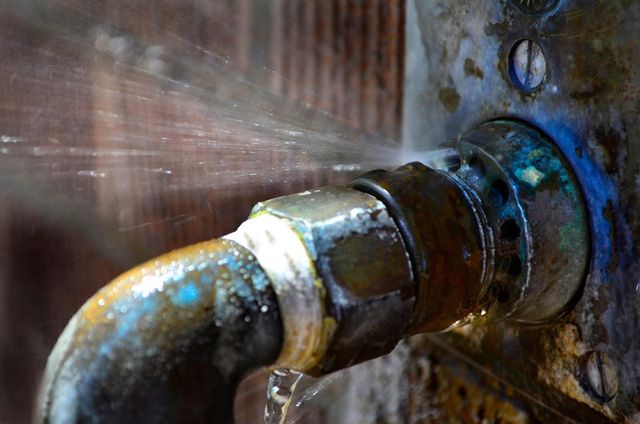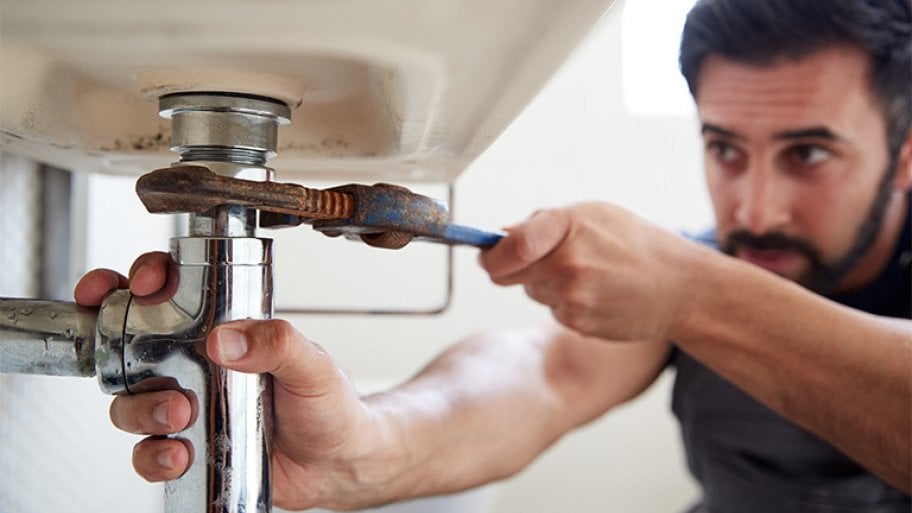Dealing with Household Plumbing Sounds Effectively
Dealing with Household Plumbing Sounds Effectively
Blog Article
This great article down below relating to Why is My Home Making Strange Plumbing Noises is amazingly attention-grabbing. Don't skip it.

To diagnose loud plumbing, it is very important to figure out first whether the undesirable sounds occur on the system's inlet side-in various other words, when water is turned on-or on the drainpipe side. Noises on the inlet side have actually varied reasons: excessive water stress, worn shutoff and tap parts, poorly connected pumps or various other appliances, inaccurately put pipeline fasteners, as well as plumbing runs having too many limited bends or other limitations. Sounds on the drain side generally originate from poor place or, similar to some inlet side noise, a design having tight bends.
Hissing
Hissing noise that takes place when a faucet is opened somewhat normally signals excessive water pressure. Consult your regional public utility if you presume this trouble; it will be able to inform you the water stress in your location and can set up a pressurereducing shutoff on the inbound supply of water pipeline if essential.
Thudding
Thudding noise, usually accompanied by shivering pipes, when a faucet or home appliance valve is shut off is a condition called water hammer. The noise as well as resonance are brought on by the reverberating wave of pressure in the water, which instantly has no place to go. In some cases opening up a shutoff that discharges water rapidly right into an area of piping containing a restriction, elbow joint, or tee fitting can produce the same condition.
Water hammer can typically be treated by setting up fittings called air chambers or shock absorbers in the plumbing to which the problem valves or taps are attached. These tools permit the shock wave developed by the halted circulation of water to dissipate airborne they have, which (unlike water) is compressible.
Older plumbing systems might have brief upright areas of capped pipeline behind wall surfaces on faucet runs for the same purpose; these can eventually fill with water, decreasing or destroying their effectiveness. The treatment is to drain pipes the water supply entirely by turning off the primary water shutoff and also opening up all faucets. Then open up the major supply shutoff as well as close the faucets individually, beginning with the tap nearest the valve and also finishing with the one farthest away.
Chattering or Shrilling
Extreme chattering or shrieking that occurs when a shutoff or tap is switched on, and that usually goes away when the installation is opened completely, signals loose or malfunctioning interior parts. The solution is to change the shutoff or tap with a new one.
Pumps and devices such as cleaning makers as well as dishwashers can transfer motor sound to pipes if they are poorly linked. Link such things to plumbing with plastic or rubber hoses-never stiff pipe-to isolate them.
Other Inlet Side Noises
Creaking, squealing, scraping, breaking, and touching typically are caused by the development or contraction of pipelines, typically copper ones providing hot water. The audios happen as the pipelines slide against loosened fasteners or strike neighboring home framework. You can usually pinpoint the place of the problem if the pipelines are exposed; simply follow the noise when the pipelines are making noise. More than likely you will uncover a loose pipeline hanger or an area where pipelines lie so near to flooring joists or other mounting pieces that they clatter against them. Affixing foam pipe insulation around the pipelines at the point of call ought to correct the problem. Make sure bands and wall mounts are secure as well as provide sufficient assistance. Where feasible, pipe bolts need to be affixed to huge architectural components such as foundation walls rather than to mounting; doing so reduces the transmission of resonances from plumbing to surface areas that can amplify and transfer them. If affixing bolts to framing is inescapable, cover pipelines with insulation or various other resistant product where they contact fasteners, and sandwich the ends of brand-new bolts in between rubber washers when installing them.
Fixing plumbing runs that struggle with flow-restricting tight or many bends is a last resort that ought to be embarked on only after seeking advice from a knowledgeable plumbing contractor. Unfortunately, this circumstance is relatively usual in older residences that might not have actually been constructed with interior plumbing or that have actually seen numerous remodels, especially by novices.
Drain Noise
On the drain side of plumbing, the chief goals are to eliminate surfaces that can be struck by falling or hurrying water and also to shield pipes to include unavoidable noises.
In new building, tubs, shower stalls, bathrooms, as well as wallmounted sinks as well as basins ought to be set on or against resistant underlayments to lower the transmission of audio with them. Water-saving bathrooms and faucets are much less loud than traditional models; mount them rather than older types even if codes in your location still allow utilizing older fixtures.
Drainpipes that do not run up and down to the cellar or that branch into horizontal pipeline runs sustained at floor joists or other mounting present particularly troublesome sound issues. Such pipes are huge sufficient to radiate considerable resonance; they likewise carry substantial amounts of water, which makes the scenario worse. In brand-new building and construction, define cast-iron soil pipelines (the big pipelines that drain pipes toilets) if you can manage them. Their massiveness includes a lot of the sound made by water passing through them. Likewise, avoid transmitting drainpipes in wall surfaces shown bedrooms and also rooms where individuals gather. Wall surfaces including drains must be soundproofed as was described previously, using dual panels of sound-insulating fiberboard and also wallboard. Pipes themselves can be covered with unique fiberglass insulation produced the purpose; such pipelines have an invulnerable plastic skin (often having lead). Results are not constantly adequate.
If Your Plumbing is Making These Sounds, There’s a Problem
A Bang or Thump When You Turn Off a Faucet
If a loud bang or thump greets you each time your turn off running water, you likely have a water hammer. A water hammer occurs when the water velocity is brought to a halt, sending a shock wave through the pipe. It can be pretty jarring — even worse, damaging to your plumbing system. All that thudding could loosen connections.
Strange Toilet Noises
You’re so familiar with the sounds your toilet makes that your ears will be attuned to anything out of the ordinary. Fortunately, most unusual toilet noises can be narrowed down to just one of several problems.
Foghorn sound:
Open the toilet tank Flush the toilet When you hear the foghorn noise, lift the float to the top of the tank If you’re ambitious, you can remove the ballcock valve and disassemble it to replace the washer. Or you can more easily replace the ballcock valve entirely. This device is relatively inexpensive and available at most any hardware store.
Persistent hissing:
The hissing following a flush is the sound of the tank filling. It should stop once the tank is full. But if the hissing continues, it’s likely because water is leaking out of the tank. The rubber flap at the bottom of the tank can degrade, letting water slip through and into the bowl. That’s why the tank is refilling continuously. Fortunately, this is an easy fix:
Cut the water to the toilet by closing the shutoff valve on the water supply line. Flush the toilet to drain the tank. Disconnect the flapper Attach the new flapper Gurgling or bubbling:
Gurgling or bubbling suggests negative air pressure in the drain line, likely resulting from a clog. As air releases, it causes the water in the toilet to bubble. This could either be a minor issue or a major one, depending on the clog’s severity. Clogs can be caused by toilet paper or more stubborn obstructions such as tree roots. If you can’t work out the clog with a plunger, contact a professional plumber for assistance because a clog of this magnitude could lead to filthy and unsanitary sewage backups in your sink bathtub.

Hopefully you enjoyed our excerpt about Why Do My Plumbing Pipes Make A Knocking Noise. Thank you for taking the time to read through our blog post. Those who liked our post kindly don't forget to pass it around. Thanks for your time. Kindly come by our website back soon.
Expert plumbing solutions, one click. Report this page